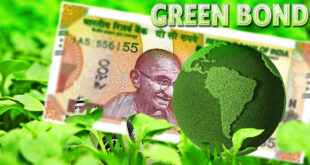- The last month of 2022 capped a year dominated by high inflation headlines on a seemingly amiable note.
- The average price rise faced by consumers during December slipped to its lowest since November 2021 at 5.7%. Data released on Monday show that wholesale inflation also fell to a 22-month-nadir of 4.95% from 5.88% in November.
- That December 2021 had registered a steep 14.2% wholesale price rise, exaggerated the cooling effect.
- Yet, this marked the seventh successive month of moderation in wholesale inflation since it hit an all-time high of 16.6% in May 2022, and the fourth straight month that retail inflation has eased from 7.4% in September 2022.
- Over November and December, retail inflation has stayed below the central bank’s 6% threshold and wholesale price rise has been slower than consumer prices, signalling that pressures on producers to pass on higher input costs may be easing.
- The Government, gearing up for a pre-election Budget, the RBI, which has projected inflation to average 5.9% in the current quarter from 6.1% in October-December 2022, and consumers too, would be hoping this is a harbinger of lower prices this year.
- However, these two months of milder inflation do not offer compelling comfort on this front simply because they have been disproportionately influenced by what some economists have termed an ‘idiosyncratic’ element — ‘vegetable prices’.
- From about 8% inflation in October, prices for vegetables dropped 8% and 15% in November and December, respectively, as onions, tomatoes and potatoes turned cheaper.
- This pulled down food inflation but may not have lowered overall household expenses on food much. Inflation accelerated for the sixth straight month in the largest item of the food basket — cereals (at 13.8%, with wheat prices rising 22%).
- An uptick was also seen for pulses, milk, eggs, meat and fish, and spices, even as non-food items and services show stubborn price rise trends, be it clothing, footwear, personal care, household goods or health and education.
- Keeping volatile vegetable prices out, retail inflation in November was 7% and raced to 7.2% in December, belying the headline trend.
- Core inflation, which measures price rise minus food and energy, also inched up and needs attention, as reiterated by RBI Governor Shaktikanta Das amid a growing clamour for pausing interest rate hikes.
- With the Chinese economy rebooting from a strict zero COVID policy, global commodity and oil prices may well harden again.
- It is too early to take the eye off the inflation problem, which continues to hurt rural demand in particular, deterring much-awaited private investment plans.
SOURCE: THE HINDU, THE ECONOMIC TIMES, PIB
 Chinmaya IAS Academy – Current Affairs Chinmaya IAS Academy – Current Affairs
Chinmaya IAS Academy – Current Affairs Chinmaya IAS Academy – Current Affairs



